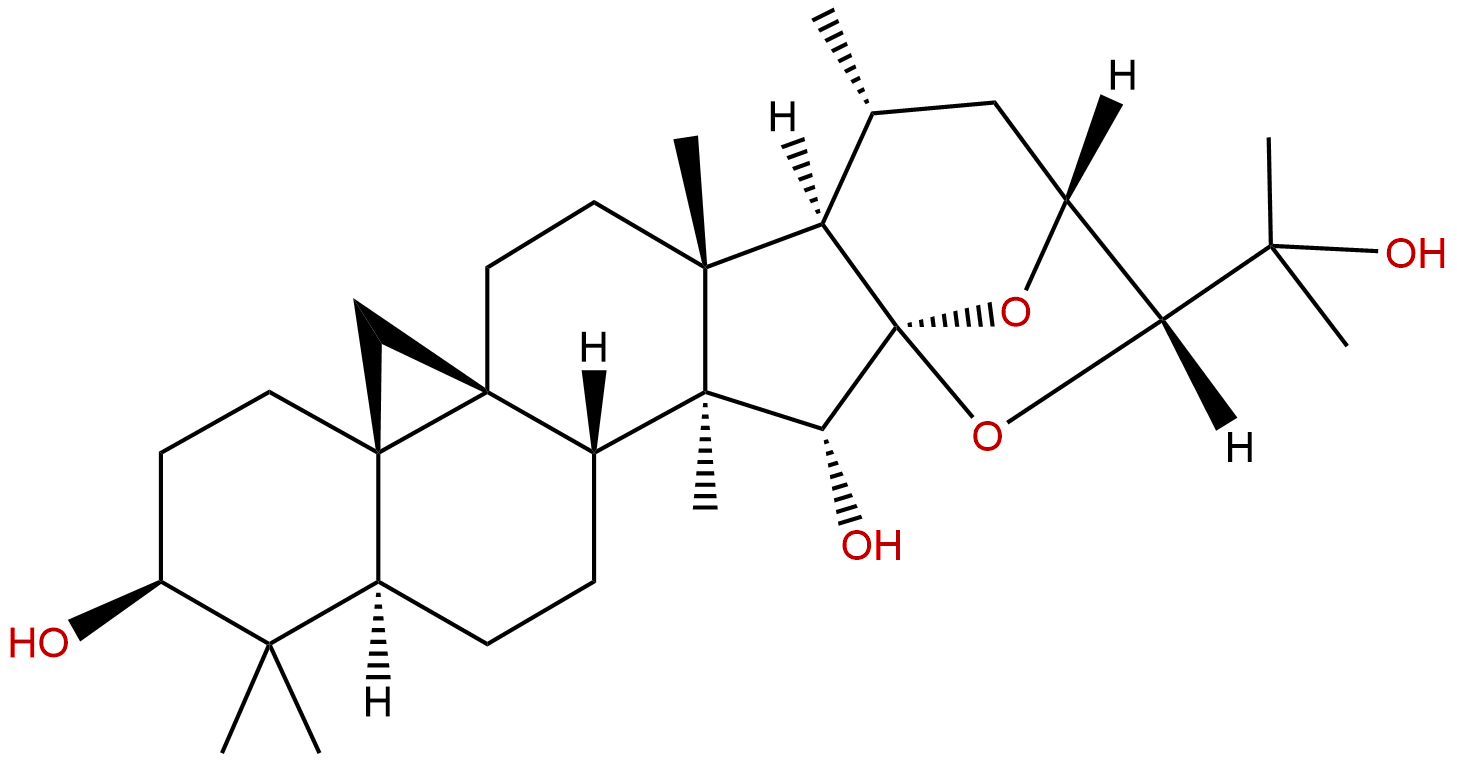
CimigenolCAS No.:3779-59-7
|
||||||||||
 |
|
|
||||||||

| Catalogue No.: | BP0357 |
| Formula: | C30H48O5 |
| Mol Weight: | 488.709 |
Synonym name:
Catalogue No.: BP0357
Cas No.: 3779-59-7
Formula: C30H48O5
Mol Weight: 488.709
Botanical Source:
Purity: 95%~99%
Analysis Method: HPLC-DAD or/and HPLC-ELSD
Identification Method: Mass, NMR
Packing: Brown vial or HDPE plastic bottle
Can be supplied from milligrams to grams.
For Reference Standard and R&D, Not for Human Use Directly.
Inquire for bulk scale.
Description:
Cimigenol is a potential antitumor compound, combination of it with an autophagy inhibitor may be a valuable strategy for the chemoprevention or treatment of colon cancer. It exerted potent cytotoxic activity against SMMC-7721 (7.87 µM) and A-549 (12.16 µM).
References:
Cancer Manag Res. 2018 Dec 6;10:6715-6729.
Anticancer efficiency of cycloartane triterpenoid derivatives isolated from Cimicifuga yunnanensis Hsiao on triple-negative breast cancer cells.
The roots and rhizomes of Cimicifuga yunnanensis Hsiao are commonly used as anti-inflammatory, antipyretic, and analgesic remedies and detoxification agents in traditional Chinese medicine (TCM). Although C. yunnanensis has been considered as supplementary medicine for several disorders, the antitumor effect of this herb and its key components has not been explored.
METHODS AND RESULTS:
The rhizomes of C. yunnanensis were isolated by chromatographic techniques. Structures of isolated compounds were identified based on spectroscopic methods and comparison with published data. The in vitro anticancer activities of purified components were also performed by MTT experiments. The in vivo anticancer activities were examined by subcutaneous tumor model or a breast cancer liver metastasis model. In this study, we aimed to identify and characterize the effective antitumor components from the rhizomes of C. yunnanensis. By bioassay-guided fractionation techniques and chemical characterization, 12 cycloartane triterpenes and four chromones were isolated, among them, 11 compounds were identified in this genus at first. The identified two compounds showed dramatic inhibitory activities against breast cancer cells: compound 4 (23-epi-26-deoxyactein) and compound 13 (Cimigenol). Then, we examined the antitumor effect of these two selective candidate chemicals on triple-negative breast cancer (TNBC) cells in vivo and found that they could reduce tumor growth in subcutaneous tumor model or breast cancer liver metastasis model.
CONCLUSIONS:
These results suggested that the selective compounds isolated from C. yunnanensis Hsiao could be the promising new agents for TNBC treatment.
Chem Pharm Bull (Tokyo). 2012;60(5):571-7.
Studies on the constituents of Cimicifuga foetida collected in Guizhou Province and their cytotoxic activities.
METHODS AND RESULTS:
Two new triterpenoids and a chromone glycoside, namely, 24-epi-Cimigenol-3-one (1), foetinoside (2), cimifugin-4'-O-[6″-feruloyl]-β-D-glucopyranoside (3), together with 18 known compounds, were isolated from the rhizomes of Cimicifuga foetida L. collected in Guizhou Province, China. All of the compounds were identified by spectroscopic methods, as well as chemical methods.
CONCLUSIONS:
In the in vitro cytotoxicity evaluation of these compounds against 5 human cancer cell lines, Cimigenol (8) exerted the most potent cytotoxic activity against SMMC-7721 (7.87 µM) and A-549 (12.16 µM), while cimiacerin B (9) also showed obvious cytotoxicity against the A-549 cell line, with an IC(50) value of 16.77 µM.